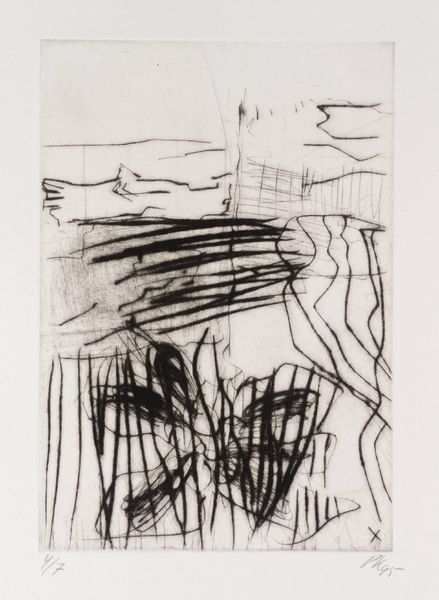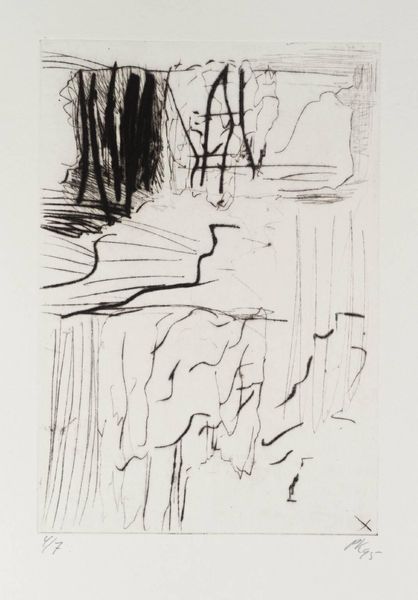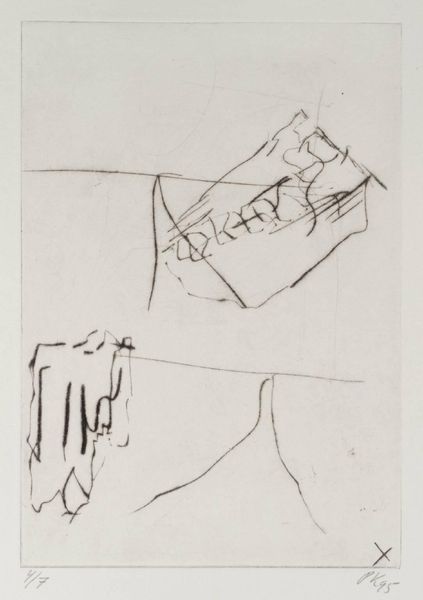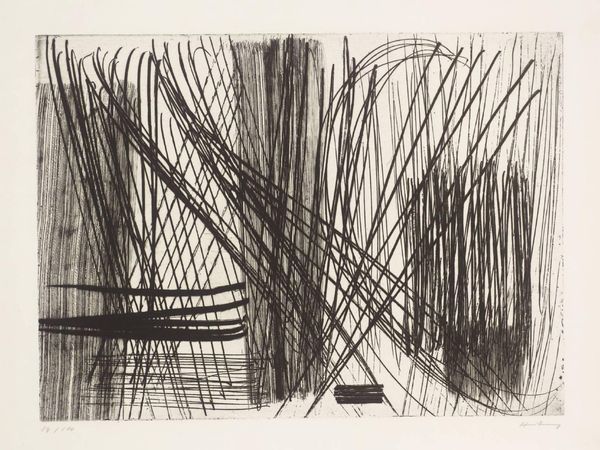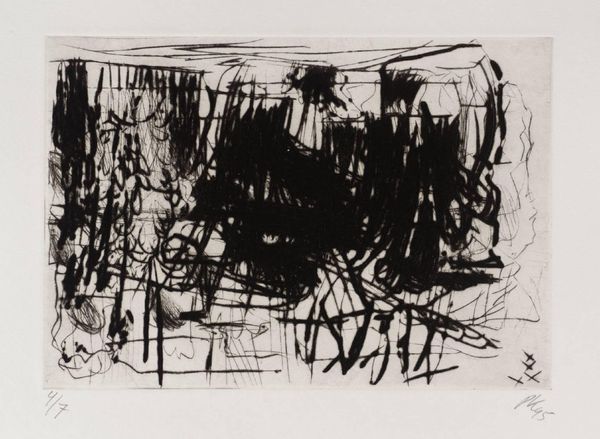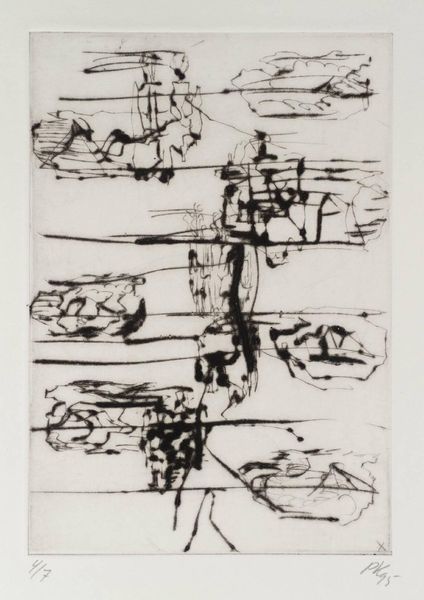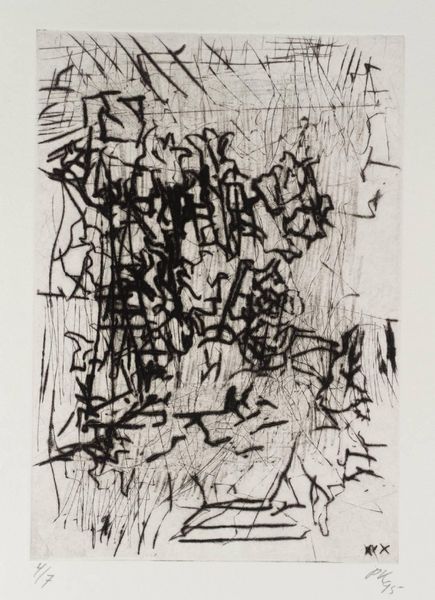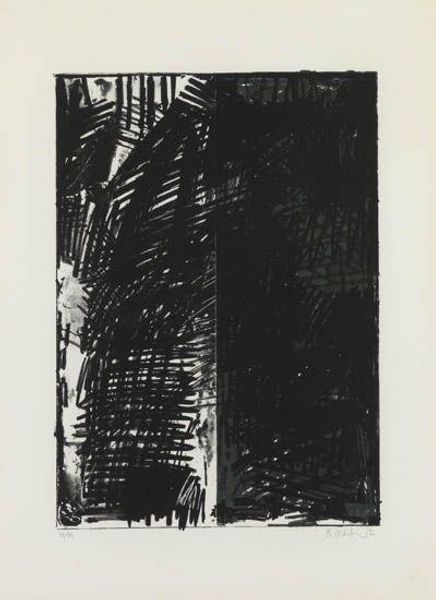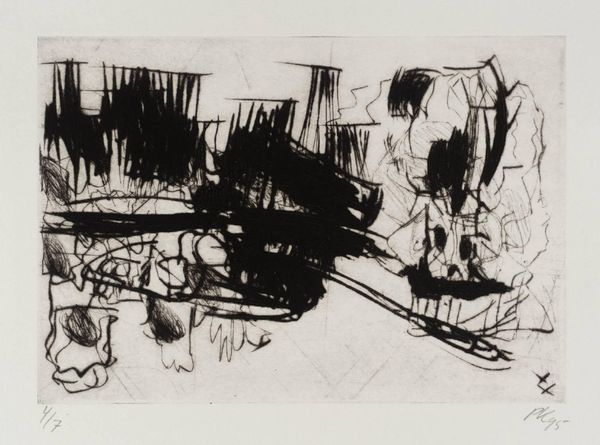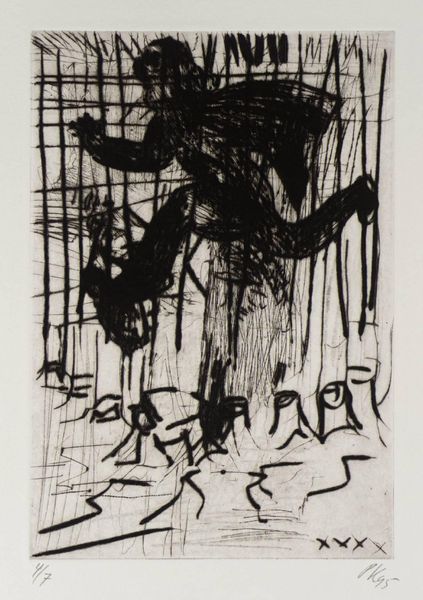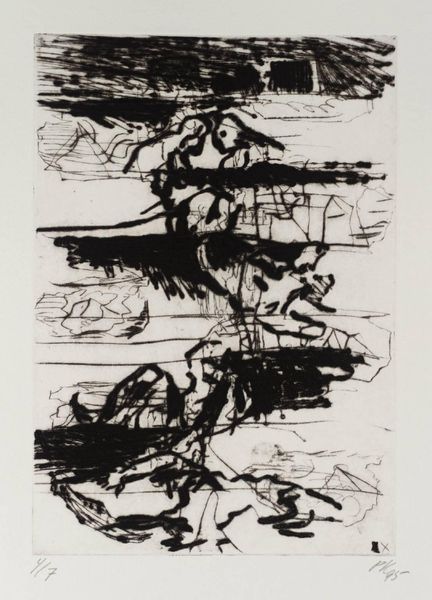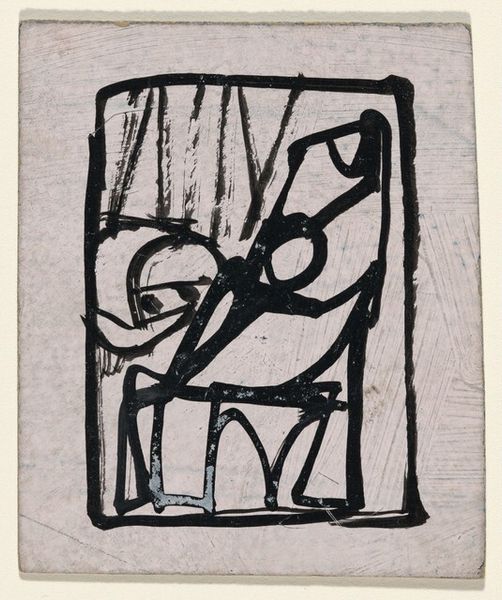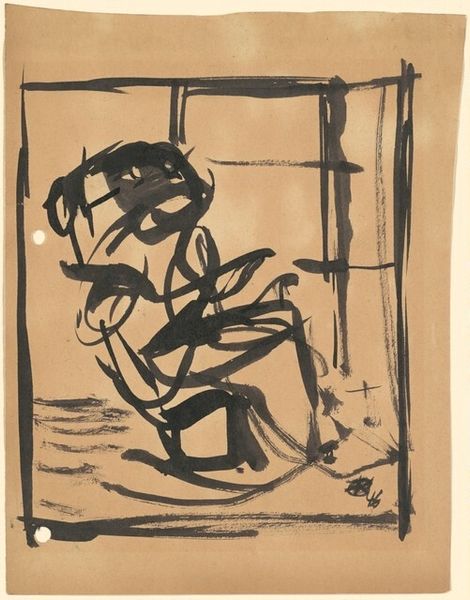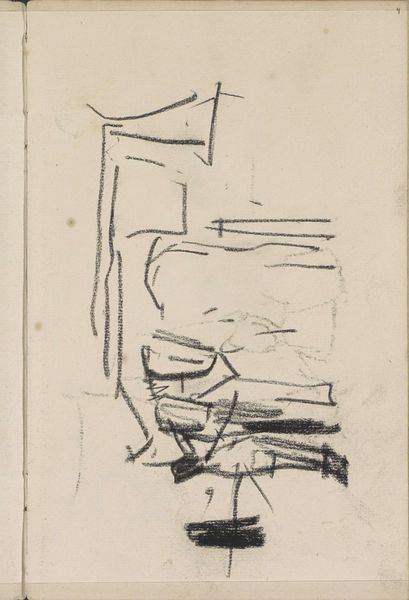
drawing, ink
#
abstract-expressionism
#
drawing
#
pen sketch
#
ink
#
abstraction
#
line
Dimensions: sheet (irreg.): 12.5 × 7.8 cm (4 15/16 × 3 1/16 in.)
Copyright: National Gallery of Art: CC0 1.0
Editor: Here we have an untitled ink drawing by Franz Kline, a master of Abstract Expressionism. Looking at the strong black lines against the white of the page, I sense a powerful, almost violent energy. What do you see in this piece, and how does it connect to the broader art historical context? Curator: That's a great starting point. Consider the era in which Kline was working - post World War II America. Artists grappled with immense societal shifts, political polarization, and a feeling of existential dread. These bold, seemingly chaotic strokes become more than just aesthetic choices. What if they represent a rebellion against traditional artistic constraints, a breaking free from established norms, even a reflection of the fractured state of the world? Editor: So you’re suggesting the abstraction isn't just about form, but about embodying a specific historical feeling? Like, is it possible the grid-like structure in both drawings hints at imprisonment, restriction, perhaps commenting on the social limitations imposed during that time? Curator: Precisely. And don't forget the element of gender in that era. Abstract Expressionism was largely dominated by men, a space where women artists often struggled to be recognized. How does knowing that affect your interpretation of the aggressive, masculine energy you initially perceived? Does it open the possibility to a critical understanding of the societal structures reinforcing patriarchal power dynamics at the time? Editor: I hadn't thought about that. Viewing it as a critique of societal structures, it shifts the entire meaning. The raw, bold strokes aren't just an expression of angst but perhaps a conscious effort to dismantle and question norms. I’m seeing how crucial it is to consider the socio-political circumstances surrounding the artwork. Curator: Exactly. By engaging with historical and theoretical perspectives, we transform art from a decorative object into a powerful tool for social commentary. Editor: This really deepens my understanding of Kline's work. Thank you for making the socio-political context clear and impactful. Curator: My pleasure. The best art sparks critical thinking and dialogue about the world we inhabit.
Comments
No comments
Be the first to comment and join the conversation on the ultimate creative platform.
